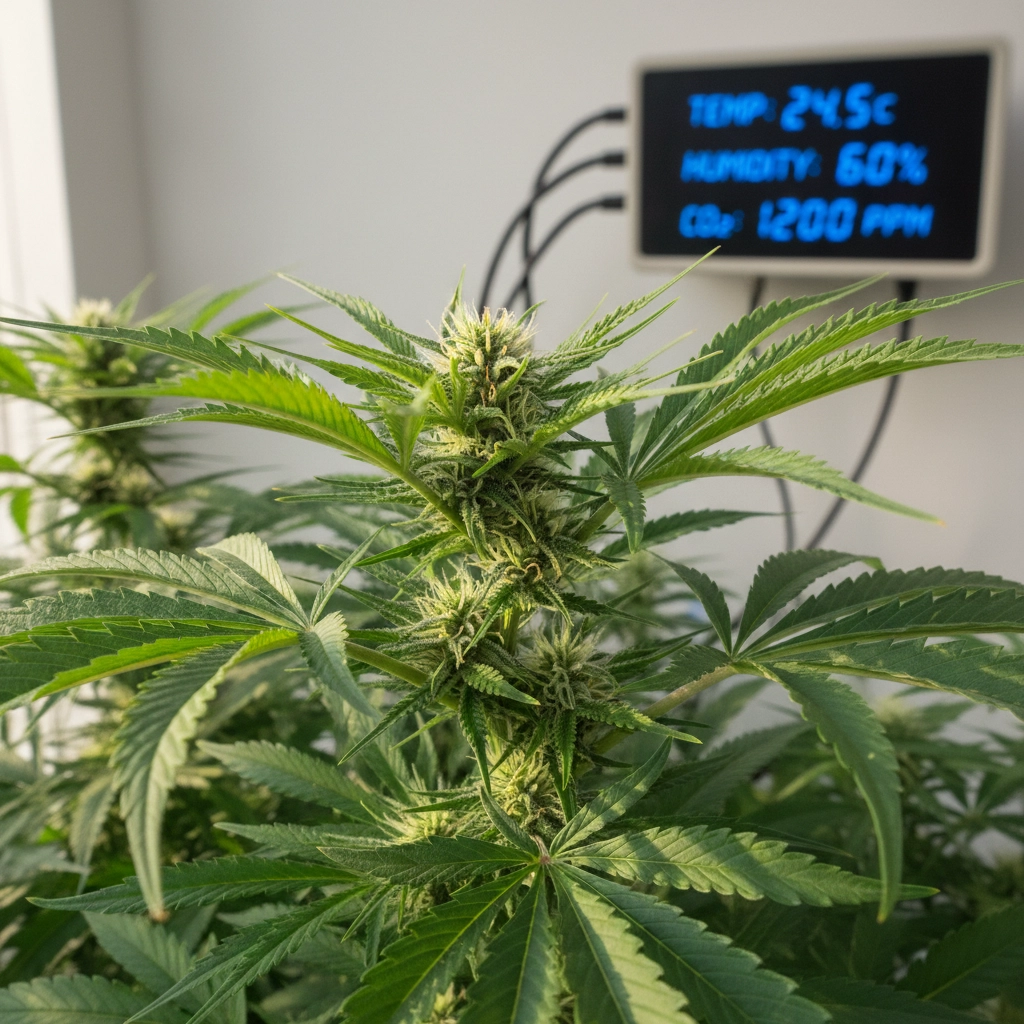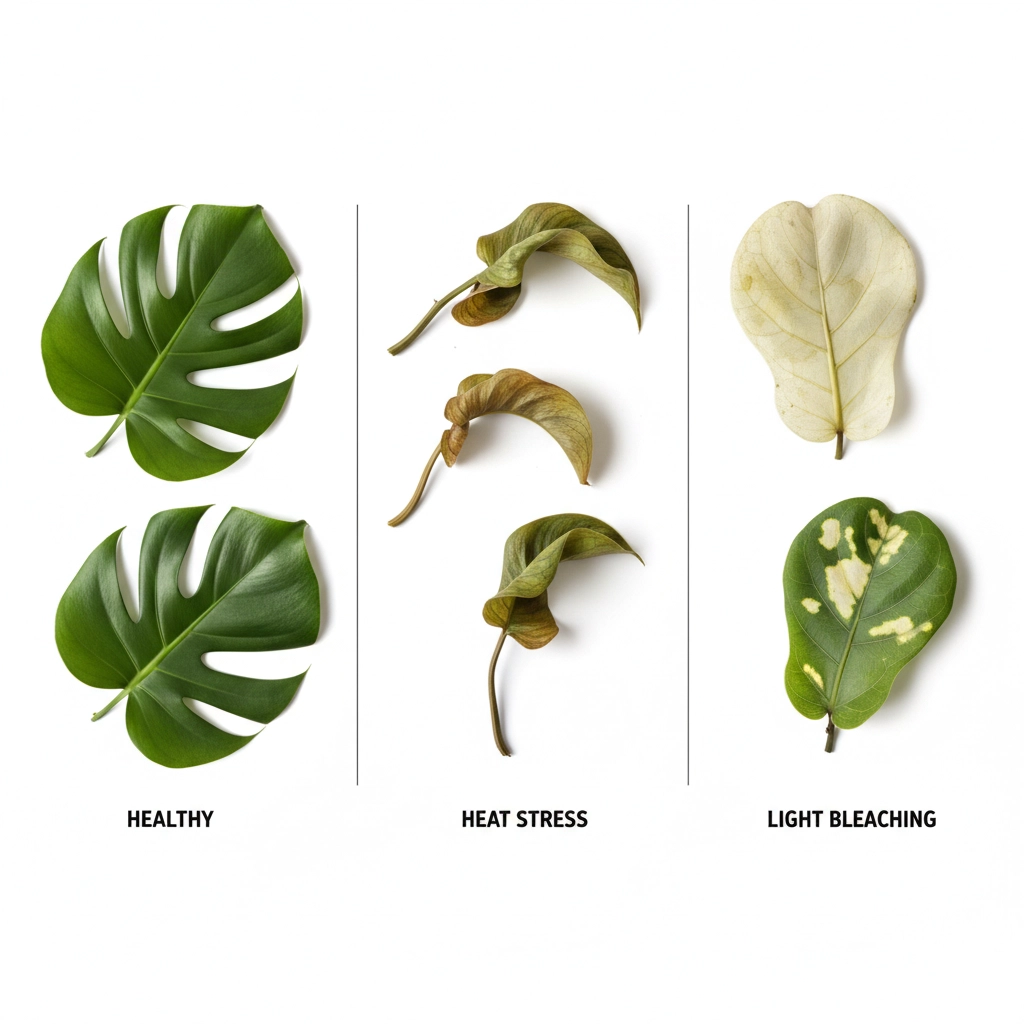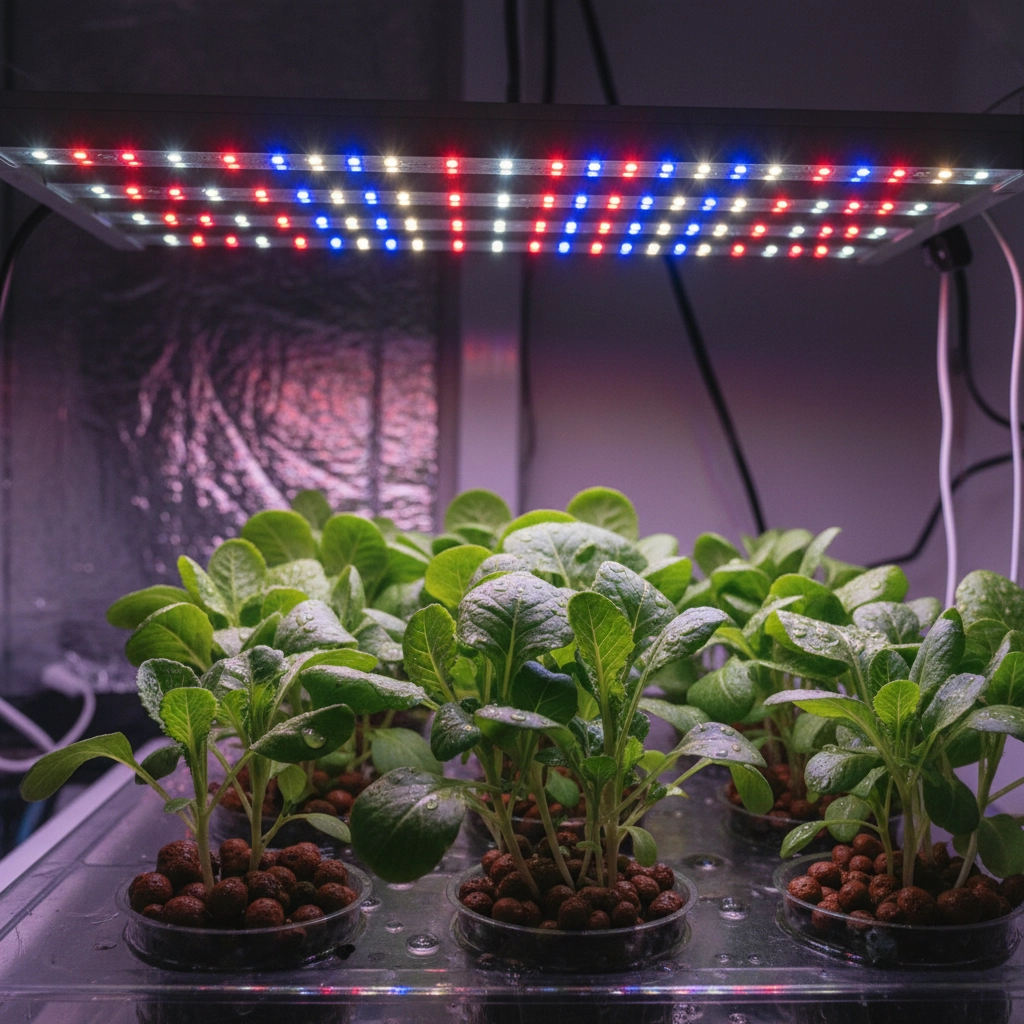Blog
Stressed Plants: How Environmental Factors Trigger Cycles of Growth and Dormancy
Every grower has witnessed it: plants that suddenly slow their growth, leaves that start showing stress signals, or crops that seem to "shut down" during certain environmental conditions. What many don't realize is that these responses aren't random failures. They're actually sophisticated survival mechanisms that plants have evolved over millions of years, governed by fundamental biological principles that we can understand and work with rather than against.
Plants operate under what scientists call the Law of Tolerance: a principle stating that every plant has minimum and maximum thresholds for environmental factors, with an optimal range in between where growth flourishes. When conditions push beyond these comfort zones, plants don't just suffer damage; they actively trigger protective responses that can include slowing growth, entering dormancy, or redirecting energy toward survival rather than production.
Understanding these stress responses and the environmental triggers behind them isn't just academic knowledge: it's practical power that can transform your growing success.
Understanding the Law of Tolerance in Plant Biology
The Law of Tolerance, first developed by ecologist Victor Shelford, explains that organisms have both minimum and maximum tolerance levels for each environmental factor. For plants, this means every species has specific ranges for light intensity, temperature, humidity, CO₂ concentration, and nutrient availability where they perform optimally.
Picture this as a bell curve for each environmental factor. At the peak of the curve, your plants are in their "Goldilocks zone": everything is just right, and growth is vigorous and healthy. As conditions move toward either extreme, stress increases and plant performance declines. Push too far in either direction, and you hit the tolerance limits where the plant either dies or enters protective dormancy.
What makes this particularly interesting for growers is that plants don't just passively endure stress: they actively respond to it. When environmental conditions approach their tolerance limits, plants begin adjusting their physiology, metabolism, and growth patterns. These aren't signs of failure; they're intelligent adaptations designed to ensure survival until better conditions return.

The key insight here is that environmental stress serves as a communication system between plants and their surroundings. Plants use environmental cues to synchronize their development with predictable seasonal cycles, determining when to grow actively and when to conserve resources in dormancy states.
Environmental Stressors That Trigger Plant Responses
Abiotic stress: stress from non-living environmental factors: includes the major players that every grower deals with: light intensity and duration, temperature fluctuations, humidity levels, CO₂ concentration, water availability, and nutrient balance. These stressors don't work in isolation; they interact with each other in complex ways that can either compound problems or provide offsetting benefits.
The duration and intensity of stress exposure significantly affects how plants respond. Short-term stress might trigger temporary protective measures like closing stomata or adjusting leaf angle. Chronic stress, however, leads to more dramatic changes including altered gene expression, modified plant architecture, and shifts between active growth and dormancy states.
What complicates matters for indoor and hydroponic growers is that plants perceive stress differently depending on their developmental stage. A seedling might be devastated by conditions that a mature plant handles easily, while a plant entering its flowering phase might be particularly sensitive to stressors it previously tolerated without issue.
The fact of the matter is that some stress can actually be beneficial. Controlled environmental stress can trigger desirable responses like increased secondary metabolite production, improved root development, or enhanced disease resistance. The challenge lies in finding that sweet spot between beneficial stress and harmful damage.
Light Stress and Plant Adaptation Mechanisms
Light represents one of the most critical environmental factors influencing plant stress responses and growth cycles. Plants have evolved sophisticated mechanisms to detect not just light intensity, but also light quality (spectral composition), photoperiod (day length), and the direction of light sources.
Too much light creates oxidative stress as plants struggle to process more energy than their photosynthetic machinery can handle safely. You'll see this as bleaching, leaf burn, or plants that appear to "hide" by curling their leaves or adjusting their angle to reduce light exposure. This is particularly common with high-intensity LED systems when proper acclimatization isn't provided.
Too little light triggers a different set of responses. Plants stretch (etiolate) as they search for better light sources, divert energy from root development to shoot growth, and may eventually enter a semi-dormant state where they maintain basic metabolic functions but cease active growth and development.
Perhaps most importantly for growers, photoperiod: the length of daily light exposure: serves as one of the primary environmental signals controlling dormancy and growth cycles. Shortening day lengths trigger dormancy preparation in many plants, while increasing photoperiods signal the return of active growth conditions. This is why maintaining consistent photoperiods is crucial for preventing unwanted dormancy responses in controlled environments.

The practical takeaway is that light stress management requires attention to intensity, duration, and consistency. Gradual transitions between different light conditions allow plants to adapt without triggering severe stress responses.
Temperature's Critical Role in Growth and Dormancy Cycles
Temperature stress operates on multiple timeframes and triggers some of the most dramatic plant responses in terms of growth and dormancy cycling. Both high and low temperature extremes can push plants beyond their tolerance zones, but the timing and duration of temperature stress often determines whether plants enter protective states or suffer permanent damage.
Cold stress below a plant's tolerance range triggers a cascade of protective responses. Initially, plants may slow their metabolic processes and reduce growth rates. If cold conditions persist or intensify, many plants enter endodormancy: a deep dormancy state where growth stops entirely until specific temperature conditions are met for release.
This chilling requirement serves a crucial protective function. It prevents plants from resuming growth during brief warm spells in winter that could lead to freeze damage when cold returns. Different plants require different amounts of chilling time, measured in "chill hours" at specific temperature ranges, before they can break dormancy and resume normal growth.
Heat stress creates different challenges. High temperatures can denature proteins, increase respiration rates beyond sustainable levels, and create water stress even when moisture is adequate. Plants respond by reducing growth, increasing heat shock protein production, and sometimes entering a form of temporary dormancy during the hottest parts of the day or season.
The interaction between temperature and other environmental factors amplifies stress effects. High temperatures combined with high light intensity create particularly severe stress conditions, while high temperatures with low humidity can trigger severe water stress even in well-watered plants.
For indoor growers, maintaining stable temperatures within each plant's optimal range is crucial for preventing unwanted dormancy responses and ensuring consistent growth. Temperature swings of more than 10-15 degrees Fahrenheit within a 24-hour period can trigger stress responses even if the absolute temperatures remain within acceptable ranges.
CO₂ Levels and Plant Stress Response
Carbon dioxide concentration affects plant stress tolerance in ways that many growers underestimate. While plants can survive in a wide range of CO₂ concentrations, their ability to handle other environmental stresses changes dramatically based on CO₂ availability.
Low CO₂ levels (below 300 ppm) create a bottleneck in photosynthesis that makes plants more vulnerable to other stresses. When CO₂ is limiting, plants cannot efficiently process available light energy, which can lead to light stress at intensities they would normally handle easily. This is particularly problematic in sealed growing environments where CO₂ can become depleted during active photosynthesis periods.
Elevated CO₂ levels (800-1200 ppm) can improve stress tolerance by allowing plants to maintain photosynthesis even when stomata are partially closed due to heat or water stress. However, very high CO₂ concentrations (above 1500 ppm) can create their own stress by affecting pH balance and nutrient uptake.
The timing of CO₂ availability also matters. Plants experiencing CO₂ stress during critical developmental periods may trigger dormancy responses or severely reduce growth rates even after CO₂ levels normalize.

What's particularly important for hydroponic and indoor growers is that CO₂ stress often compounds other environmental stresses. A plant struggling with temperature or light stress will be even more vulnerable if CO₂ levels are suboptimal. Maintaining adequate CO₂ levels: typically 400-800 ppm for most crops: provides a buffer that helps plants tolerate other environmental challenges.
Practical Strategies for Minimizing Plant Stress
The goal isn't to eliminate all environmental stress: some stress can actually improve plant quality and resilience. Instead, focus on avoiding the extreme stress conditions that trigger unwanted dormancy responses or cause permanent damage.
Monitor Environmental Parameters Consistently. Invest in reliable monitoring systems that track temperature, humidity, light intensity, and CO₂ levels continuously. Most stress-related problems develop gradually, and early detection allows for intervention before plants enter protective dormancy states.
Implement Gradual Transitions. When changing environmental conditions: whether increasing light intensity, adjusting temperature ranges, or modifying feeding schedules: make changes gradually over several days. This allows plants to adapt without triggering severe stress responses.
Maintain Optimal Ranges Rather Than Perfect Numbers. Plants are more tolerant of stable conditions within their optimal range than they are of fluctuating conditions that repeatedly push them toward their tolerance limits. A temperature that varies between 72-76°F consistently is better than one that swings from 68-80°F daily.
Address Multiple Stressors Simultaneously. Environmental stresses interact and compound each other. Fixing just temperature while ignoring humidity or CO₂ often fails to resolve stress symptoms. Take a comprehensive approach that optimizes all major environmental factors together.
Use Quality Growing Media and Nutrition. Stressed root systems make plants more vulnerable to environmental stress. Proper container systems and water conditioning help maintain root health, which improves overall stress tolerance.
Plan for Recovery Periods. Plants that have experienced significant stress need time to recover before they can handle additional challenges. After resolving major stress conditions, allow several days to weeks of optimal conditions before making any additional environmental changes.
The bottom line is that understanding plant stress responses transforms you from someone who reacts to problems into someone who prevents them. When you recognize that plants are constantly communicating their stress levels through growth patterns, leaf appearance, and developmental timing, you gain the ability to make adjustments before small problems become major setbacks.
Environmental stress will always be part of growing, but it doesn't have to derail your success. By working within the Law of Tolerance and respecting your plants' natural responses to environmental challenges, you create conditions where stress becomes a tool for producing stronger, more resilient crops rather than a source of constant frustration.
Mark
